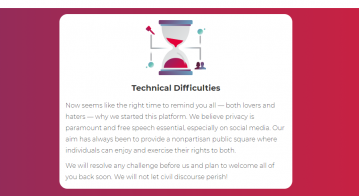How Zoom will stay relevant post-pandemic

- This year, Zoom rode the pandemic to skyrocketing success but as we close in on two years since its public debut, the company is faced with headwinds that make the future less certain.
- Now, the company is looking to explore e-mail, calendar services and even said to be interested in building a full enterprise app suite
Just over a year ago, Zoom was a relatively under-the-radar tech unicorn that defied expectations with its initial public offering (IPO). Another rarity was it being a newly public tech company that actually turned a profit. Then came 2020, and it only got better for the California-based company.
Zoom went from being a niche business software, predominantly used among tech firms, to an indispensable lifeline to connect with the outside world. Zoom Video Communications comes with a free option that limits calls to 40 minutes, as well as an unlimited paid plan that enables people to communicate and share many of the things they used to do in person.
The company has in fact grown years in just months. In context, this time last year, Zoom had on average 10 million daily meeting participants. Now, it has 350 million and is the most-downloaded iPhone and iPad app of the year, beating perennial favorites like Instagram and YouTube. The company’s revenue is four times what it was in 2019.
Even its stock price rose more than 500% thanks to the unprecedented surge in remote work brought on by the Covid-19 pandemic. But as soon as news on Covid-19 vaccines surfaced, the company’s stock sold off. However, it’s an understandable retreat, considering that Zoom is up almost seven-fold this year, reflecting the company’s graduation from a fast-growing but niche cloud software application to a household tech staple that’s used for virtual meetups.
What happens to Zoom’s business when people start returning to the office still remains undecided but while there has been a rise in demand for remote working technologies, the company have also been facing an increased competition from Microsoft and Google, which have bolstered their video-conferencing products in recent months and have gotten aggressive on pricing.
Inevitably, fame comes with a price. Among others, a recently unsealed complaint lodged by the Federal Bureau of Investigation (FBI) in the US has revealed accusations that the videoconferencing platform is in cahoots with the Chinese government to monitor and delete accounts and at times suppress calls related to sensitive incidents.
Playing catch up for survival
Even before Zoom entered the scene, giant software companies like Microsoft, Cisco, and Google have mostly caught up on video chat technology, offering vastly better products than they ever did. For an instance, Microsoft Teams, which has a Zoom-like videoconferencing feature, is essentially free for companies paying for Microsoft’s Office suite. Slack, another best-of-breed workplace app that was acquired by Salesforce recently, also comes with a video component.
YOU MIGHT LIKE

Zoom fatigue? Make videoconference culture bearable
Although Zoom had double the number of app downloads in October as Google Hangouts, and four times as many as Microsoft Teams or Google Meet, but downloads have slowed from highs earlier in the pandemic. In other words, Zoom could be nearing market saturation because so many people already have an account.
From the looks of it, Zoom seems to be approaching the future through a diversity model. In short, it is exploring products beyond videoconferencing. According to a report by The Information, the company has begun developing a web email service and might offer a very early version of the product to some customers next year.
It is unclear though if the calendar app development has even started, considering the ideas, it appears like Zoom is exploring, should companies start bringing employees back to the office and reliance on videoconferencing declines. To be frank, Zoom’s major competitors are videoconferencing platforms bundled as part of broader enterprise app suites.
For example, Microsoft with its Office 365 platform and Google with its competing Workspace bundle, both platforms that offer a calendar, email, and videoconferencing products. Hence, instead of sticking as a single-purpose platform, it only makes sense for Zoom to round out its offerings.
Additionally, The Information’s report indicated that Zoom is interested in building a full enterprise app suite, including job postings for “exciting chat features” and its existing integrations with other apps like Asana and Dropbox. Perhaps, similar to Google Meet and Microsoft teams, these upcoming features is expected to bring a lot more users to Zoom.
Many businesses are now weighing up a return to the workplace, a wholesale shift to remote working, or something in between. Either way, it goes, it’s likely Zoom’s unexpected popularity won’t keep its altitude forever. But as the contrails begin to fade, the firm is preparing for a transition to a world of ‘hybrid working’.
Zoom’s CIO Advisor Magnus Falk told TechHQ recently, “There’s a lot of experimentation going on and people finding their sweet spots and innovating – and I think that’s only just started.”









